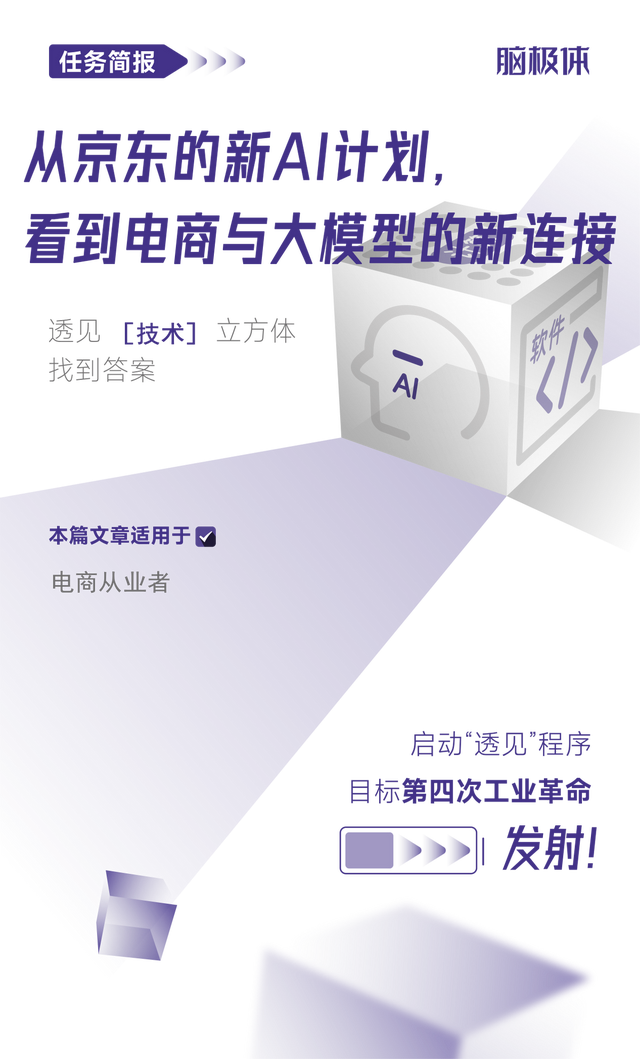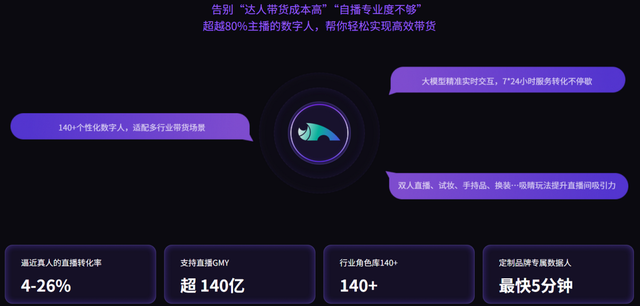Unlocking the New Synergy Between E-commerce and Large Models: JD.com's AI Evolution with JoyAI
![]() 08/14 2025
08/14 2025
![]() 546
546

Many e-commerce professionals grapple with common challenges: late-night live streams where anchors' voices grow hoarse while viewers frantically inquire about sizes; major sales events overwhelming customer service teams, causing orders to slip away; and hard-won traffic failing to convert due to imprecise recommendations.
Traditional e-commerce dividends have peaked, yet the market is flooded with AI solutions. Small and medium-sized merchants yearn for technological benefits but struggle to find effective AI implementation paths.

On July 26, JD.com unveiled a significant upgrade to its YanXi large model, rebranding it as JoyAI. JoyAI boasts a comprehensive model range spanning from 3B to 750B parameters, encompassing modalities such as language, speech, images, videos, and digital humans.
From emotionally intelligent digital live streamers to the possessed intelligence known as the "AI version of labubu," JoyAI empowers a comprehensive AI matrix encompassing supply chains, marketing, customer service, and beyond.
This prompts the question: why must the e-commerce industry embrace large models? And how does JD.com's AI suite, JoyAI, capitalize on this opportunity?

Having experienced explosive growth fueled by traffic dividends, the e-commerce industry now navigates the challenging waters of stock competition. The once prevalent extensive growth model is no longer sustainable, giving way to a relentless pursuit of operational efficiency, user experience, and cost control.
On the frontend, customer acquisition costs soar. User attention is highly fragmented, making traditional marketing akin to finding a needle in a haystack with dwindling conversion rates. Customer service response times lag, fracturing the user experience. Traditional work orders relying on manual distribution have an average response time exceeding one minute, with 60% of users abandoning purchases due to wait times exceeding five minutes. Consumers crave more precise recommendations and real-time pre-sales consulting services, achievable only through a 24/7 AI system.

On the backend, supply chain inefficiencies and inadequate collaboration hinder operations. Inaccurate demand forecasting leads to inventory backlogs, while manual picking error rates surge during sales events, increasing return rates due to logistics delays. High return logistics costs further erode profits, creating a vicious cycle. Consumers expect faster delivery speeds and transparent logistics information, which AI-driven supply chains can provide by monitoring multidimensional risk signals in real-time, enhancing supply chain resilience.
Content creation has emerged as a new competitive barrier. In an era where content equals traffic, merchants must produce over ten image-text posts and five short videos daily to maintain basic exposure. Data shows that professional live streaming rooms retain viewers 2-3 times longer than ordinary rooms, but setup costs exceed ten thousand yuan, a burden small and medium-sized merchants find difficult to bear. AI technology can swiftly generate cost-effective content materials tailored to product characteristics.
It is evident that traditional e-commerce processes are inefficient and costly, with piecemeal optimizations proving insufficient. The industry urgently requires a new AI solution to reshape productivity.

In the competitive e-commerce landscape, those who pioneer the use of new technologies to enhance experience and efficiency will stand out. Large models represent the most cost-effective choice in the AI era.
From frontend user interaction to backend supply chain management, large models serve as a master key, unlocking full-link upgrades in e-commerce.
Below, we explore the entire e-commerce shopping process to understand JoyAI's excellence.
AI e-commerce involves leveraging artificial intelligence technology to transform various aspects of e-commerce, from product selection, sales, service, to shipping, making the entire process more efficient and aligned with user needs. It's akin to installing a smart brain in traditional e-commerce.
On the frontend, large models enable goods to find people, achieving personalized precise recommendations. Intelligent recommendations utilize machine learning algorithms and user behavior data analysis to accurately predict user preferences and proactively push suitable products. Simultaneously, 7*24h intelligent marketing ensures AI robots operate round-the-clock, providing instant replies to user inquiries.

On the backend, AI technology deeply empowers various supply chain links, including warehousing, transportation, and distribution. The digital and intelligent supply chain system digitizes the entire warehousing, picking, and packing process, increasing order processing speed by over three times compared to traditional models and reducing inventory backlogs. In logistics, drone delivery shifts from fixed routes to dynamic optimization, matching transportation capacity and logistics demand through AI, effectively reducing empty travel, vacancy, and no-load rates. In quality inspection, industrial workers no longer rely on traditional machine vision; AR glasses assist in efficiently and accurately identifying product defects.
In content creation, AIGC technology revolutionizes traditional models. Merchants no longer struggle with the high cost of hiring designers and editors for product promotions. AI design can generate product image-text and short videos with a single click in minutes. In live streaming, digital human anchors achieve conversion rates surpassing 80% of real human anchors at one-tenth the cost, capable of responding to jokes and adding links. During the 618 sales event, they created over 400,000 hours of live streaming, attracting over 100 million viewers and over 5 million interactions.

While the integration of e-commerce and large models has yielded remarkable results, AI e-commerce development still faces challenges: limited model scale leading to insufficient reasoning ability in complex scenarios, fragmented multimodal interaction experiences, and the separation of large models from hardware, complicating implementation.
Moreover, for individual developers and startups, existing AI e-commerce solutions have high technical thresholds and costs. Large models remain exclusive to leading enterprises rather than practical tools benefiting the vast majority of merchants.
It is clear that providing a full-stack, low-threshold, and highly adaptable AI e-commerce solution has become crucial for e-commerce brands to differentiate themselves and cultivate competitiveness.

Amidst fierce competition among various AI e-commerce solutions, JD.com AI stands out.
During this year's JD.com 618 event, merchants relied on JD.com's AI e-commerce solutions to process over 2.2 billion orders. Large model invocation volumes increased by 130% compared to last year's Double 11, with over 14,000 agents and digital employees deployed, and 17,000 JD.com merchants utilizing JD.com digital humans for live streaming.

At the WAIC Conference in July this year, JD.com continued its strides, announcing the significant upgrade of its YanXi large model to JoyAI, further integrating the entire e-commerce process and expanding its coverage. Unmanned vehicles, AR glasses, and other cutting-edge technologies with enhanced intelligence made their debut.
So, what sets JoyAI apart from previous AI e-commerce solutions?
JoyAI offers a full-stack AI solution packaging various products and applications into one suite, enabling merchants to quickly deploy and use them on demand at a lower cost.
First, JoyAI boasts a larger size. E-commerce encompasses complex scenarios like user persona analysis, pricing strategy formulation, and supply chain optimization, where the parameter scale directly influences the model's multi-factor correlation analysis ability. Based on JD.com's vast business data, JoyAI has constructed a comprehensive model matrix ranging from 3B to 750B parameters, forming a positive closed loop of "data - model - application." Remarkably, while achieving a 30% increase in reasoning efficiency, training costs are reduced by 70%, embodying both power and economy.

Second, JoyAI features richer modalities, with possessed intelligence, digital humans, and robots thriving in multiple fields.
Modern e-commerce transcends text interaction, with scenarios like AR quality inspection and digital human live streaming demanding more from AI. With JoyAI as its foundation, JD.com has released a series of end-to-end multimodal products, integrating the entire e-commerce process. Possessed intelligence, for instance, installs large models into robots, toys, and other hardware, bridging the gap between technology and products. The toy FuZai connected to JoyAI saw its average dialogue rounds per person increase by 148%, earning it the nickname "AI version of labubu." In the medical field, on the JD Health platform powered by the "JingYi QianXun" medical large model, ordinary users can upload images to receive consultation services from AI doctors.
Finally, JoyAI offers more flexible adaptation. Addressing the industry's high deployment thresholds and implementation difficulties, JoyAI launched the enterprise-level open-source Joy Agent.
Joy Agent's GAIA accuracy rate exceeds 75%, garnering over 2,000 stars on GitHub within three days of its launch. Tested through the practice of over 20,000 agents within JD.com, Joy Agent demonstrates high performance and strong reliability. Its out-of-the-box and secondary development support benefits a wide range of individual developers and small and medium-sized merchants. Through custom configuration tools and plugins, individuals without a technical background or programming skills can swiftly complete AI private deployment using large model all-in-one machines.
JoyAI's development proves that truly valuable AI innovations in the industry must be built on powerful foundational models. From e-commerce to healthcare and toys, JD.com, through JoyAI, demonstrates China's unique AI development path characterized by "deep technological cultivation + scenario innovation." This approach, maintaining technological leadership while focusing on practical application value, embodies the core competitiveness of China's AI industry.









